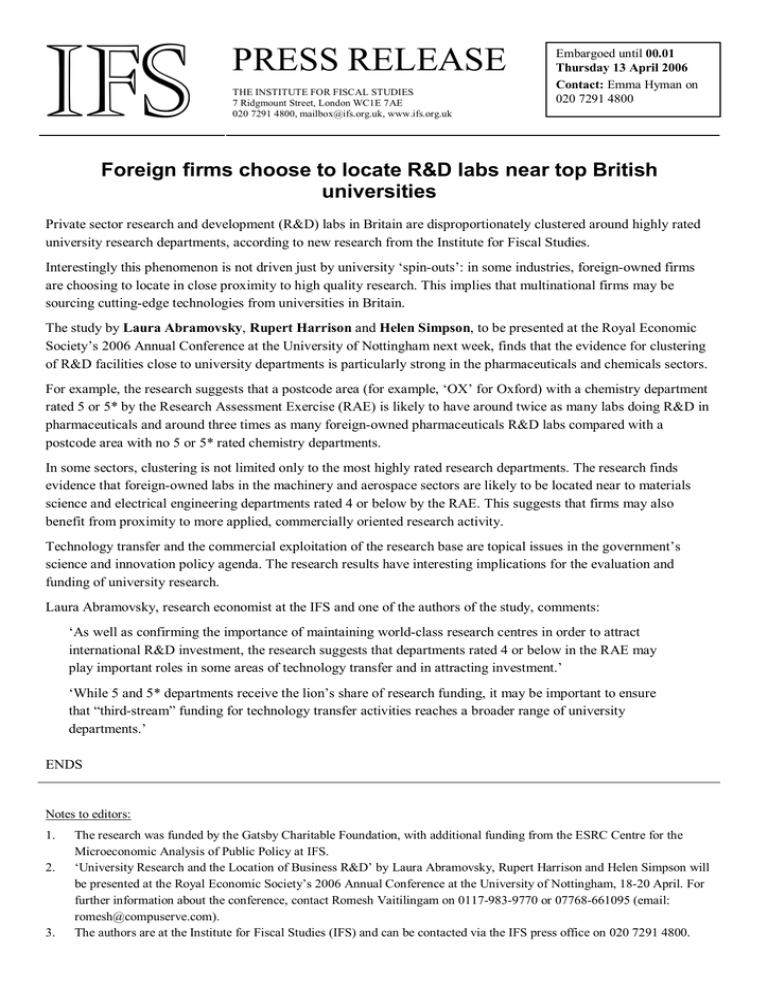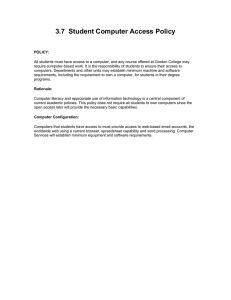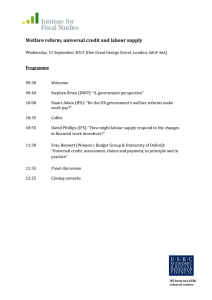IFS PRESS RELEASE
advertisement

IFS PRESS RELEASE THE INSTITUTE FOR FISCAL STUDIES 7 Ridgmount Street, London WC1E 7AE 020 7291 4800, mailbox@ifs.org.uk, www.ifs.org.uk Embargoed until 00.01 Thursday 13 April 2006 Contact: Emma Hyman on 020 7291 4800 Foreign firms choose to locate R&D labs near top British universities Private sector research and development (R&D) labs in Britain are disproportionately clustered around highly rated university research departments, according to new research from the Institute for Fiscal Studies. Interestingly this phenomenon is not driven just by university ‘spin-outs’: in some industries, foreign-owned firms are choosing to locate in close proximity to high quality research. This implies that multinational firms may be sourcing cutting-edge technologies from universities in Britain. The study by Laura Abramovsky, Rupert Harrison and Helen Simpson, to be presented at the Royal Economic Society’s 2006 Annual Conference at the University of Nottingham next week, finds that the evidence for clustering of R&D facilities close to university departments is particularly strong in the pharmaceuticals and chemicals sectors. For example, the research suggests that a postcode area (for example, ‘OX’ for Oxford) with a chemistry department rated 5 or 5* by the Research Assessment Exercise (RAE) is likely to have around twice as many labs doing R&D in pharmaceuticals and around three times as many foreign-owned pharmaceuticals R&D labs compared with a postcode area with no 5 or 5* rated chemistry departments. In some sectors, clustering is not limited only to the most highly rated research departments. The research finds evidence that foreign-owned labs in the machinery and aerospace sectors are likely to be located near to materials science and electrical engineering departments rated 4 or below by the RAE. This suggests that firms may also benefit from proximity to more applied, commercially oriented research activity. Technology transfer and the commercial exploitation of the research base are topical issues in the government’s science and innovation policy agenda. The research results have interesting implications for the evaluation and funding of university research. Laura Abramovsky, research economist at the IFS and one of the authors of the study, comments: ‘As well as confirming the importance of maintaining world-class research centres in order to attract international R&D investment, the research suggests that departments rated 4 or below in the RAE may play important roles in some areas of technology transfer and in attracting investment.’ ‘While 5 and 5* departments receive the lion’s share of research funding, it may be important to ensure that “third-stream” funding for technology transfer activities reaches a broader range of university departments.’ ENDS Notes to editors: 1. 2. 3. The research was funded by the Gatsby Charitable Foundation, with additional funding from the ESRC Centre for the Microeconomic Analysis of Public Policy at IFS. ‘University Research and the Location of Business R&D’ by Laura Abramovsky, Rupert Harrison and Helen Simpson will be presented at the Royal Economic Society’s 2006 Annual Conference at the University of Nottingham, 18-20 April. For further information about the conference, contact Romesh Vaitilingam on 0117-983-9770 or 07768-661095 (email: romesh@compuserve.com). The authors are at the Institute for Fiscal Studies (IFS) and can be contacted via the IFS press office on 020 7291 4800. 4. The analysis uses information on the location of the population of R&D labs in Great Britain together with the results of the most recent university Research Assessment Exercise to investigate whether R&D facilities are located in close proximity to high quality relevant university research departments. For example, are pharmaceuticals R&D labs located near to university chemistry, medical science and biology departments? Does the quality of university research matter for the extent of clustering? The paper uses the Research Assessment Exercise results to map the presence and the quality of research carried out by universities, and their specific research departments in Great Britain. The Higher Education Funding Council for England (HEFCE) collects the RAE, with the primary purpose being to produce ratings of research quality used to allocate the main grant for research use among universities. Each department submission is rated within a scale of 1, 2, 3, 4, 5 and 5*. The higher the number in the scale the higher the department’s research quality is rated and the more funding it gets. The UK government has recently commissioned two reviews into innovation policy: the Lambert Review of BusinessUniversity Collaboration and the Department of Trade and Industry (DTI) Innovation Report. Both of them stressed the importance of the interaction between research institutions and businesses and the role of geographic innovative clusters in improving the UK’s innovation performance.





